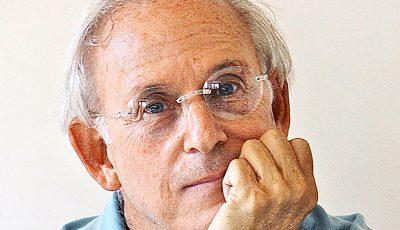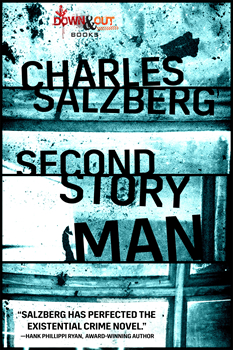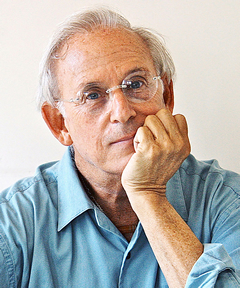

Up Close: Charles Salzberg
Getting Into Characters’ Minds
 By Wendy Tyson
By Wendy Tyson
Charles Salzberg knows how to create compelling characters, and his mastery of the craft of writing is evident in his latest thriller, SECOND STORY MAN. The novel follows two expert lawmen, Charlie Floyd and Manny Perez, as they pursue the ruthless silver thief Francis Hoyt. Hoyt’s illustrious career has been impressive, but Floyd and Perez are determined to bring Hoyt to justice. Only Hoyt is willing to do anything, even kill, to outwit his pursuers.
SECOND STORY MAN has been called a “fast-paced, character driven pursuit novel” by author Michael Sears, and author David Swinson (The Second Girl) has said, “I dare you to try and put Salzberg’s SECOND STORY MAN down….From one absorbing character to another, SECOND STORY MAN is a gripping and totally rewarding read.”
The story is told from the alternating perspectives of Floyd, Perez, and Hoyt. The novel’s structure drives its lightning pace; it’s a thrilling read. When asked what motivated him to structure the story this way, Salzberg admits that the idea came from an earlier novel, Devil in the Hole. “[Devil in the Hole] told the story from the points of view of more than two dozen people. The book was based on a true crime and I decided to structure it with the conceit that the reader was getting the story from an unseen journalist interviewing people for a book he’s putting together.” The technique worked well in Devil in the Hole, so Salzberg used three points of view with SECOND STORY MAN. “This way, the story is not only immediate—that’s the beauty of first person, I think, it cuts away all barriers between reader and author—but the reader could get into the mind of all three of the characters.”
That immediacy puts the reader into the mind of one of Salzberg’s most interesting characters, antagonist Francis Hoyt. As with Devil in the Hole, Salzberg drew inspiration from real life—only this time, real criminals. “Hoyt is very loosely based on two real-life master burglars. Alan Golder, who was known as ‘the dinnertime bandit,’ because he only struck at that hour, when people would be home (and so would their jewelry) and they’d be downstairs having dinner. The other, ‘The Silver Thief,’ was Blane Nordahl, who only stole the most valuable silver. Both these men were experts at what they did.” As for the character and background of Francis Hoyt? “Totally made up,” says Salzberg, “as are the crimes he commits.”
Charlie Floyd and Manny Perez will feel familiar to Salzberg fans because he “borrowed” them from Devil in the Hole. “Floyd, a Connecticut State Investigator (recently retired, when Second Story Man begins) was a major character in the novel,” says Salzberg, “While Manny Perez was a very minor character, who only appears briefly in one chapter.”
Together, the lawmen from very different parts of the country fuel the cat-and-mouse feel of the novel. Two pursuers of justice against a worthy adversary. Yet each character has a distinctive voice. Indeed, award-winning author Hank Phillippi Ryan said, “The riveting SECOND STORY MAN is also a master class in voice and dialogue and storytelling.” Not a surprise. Salzberg was a founding member of the New York Writers Workshop, and New York Magazine named him one of “New York’s Great Teachers.”

Salzberg (far left) with Ross Klavan and Tim O’Mara, co-authors on the book “Triple Shot” at The Mysterious Bookshop, in NYC.
When asked what moved him to teach, Salzberg says it was an accident. “I had no desire to teach and I didn’t think I’d be particularly good at it. But one day, a good friend of mine and fellow magazine journalist called me and said she was teaching a magazine writing class at The Writer’s Voice and it was over-subscribed, would I please teach another section they decided to offer. At first, I didn’t want to do it, but my freelancer’s mind took over—the one that says, never say no to anything, and so I agreed. It turned out to be the best thing I’d ever said yes to.”
Salzberg readily admits that his writing benefits from the time spent teaching. “I learn from my students every single day. Not only what to do and do better, but what not to do.” What does he advise aspiring authors to do? “Read, read, read, and listen, listen, listen. Reading, whether it’s good writing or bad, will help you write better, and listening to people tell you about themselves or what’s happened to them will not only provide you with ideas for stories, but will help you write better dialogue. And I think one of the best pieces of advice to people who want to become better story tellers is to always ask yourself the question, what if?”
Teaching hasn’t been the only accidental career in Salzberg’s life; he’s also enjoyed a successful career in journalism—one that had a humble start. “I needed a job. A friend said since I was a writer and good in English, maybe I should get a job that led to being a magazine editor. That sounded good, so I got a job in the mailroom at New York Magazine, and quickly found that the writers led a much more interesting life than the editors. And so, boldly—I was young—I quit that job after three months and started pitching magazine story ideas. Fortunately, a few caught on and I was off and running.”
Salzberg’s persistence and determination paid off. He’s now authored not only popular crime fiction novels, including the Shamus-award nominated Henry Swann Detective Series, the literary crime novel Devil in the Hole, and now SECOND STORY MAN, but an impressive list of nonfiction books, and freelance work that has appeared in such publications as Esquire, GQ, Elle, The New York Times, and the Los Angeles Times Book Review.
So what can fans look forward to next? Salzberg says, “I’m finishing up the next Henry Swann novel, the fifth, and then I owe a short story to a friend who’s putting together an anthology. And I’ve got about five or six thousand words for a new book with a new protagonist, called Canary in the Coal Mine.”
*****
 Charles Salzberg is a former magazine journalist who has now turned to a life of crime. His first novel, Swann’s Last Song, was nominated for a Shamus Award, and there are three others in the series: Swann Dives In, Swann’s Lake of Despair, which was nominated for two Silver Falchions, and was a Finalist for the Beverly Hills Book Award and the Indie Excellence Award, and Swann’s Way Out. His novel, Devil in the Hole, was named one of the best crime novels of 2013 by Suspense Magazine, and his novella, Twist of Fate, was included in Triple Shot, a collection of three noir crime novellas. He is the author of more than twenty non-fiction books, including From Set Shot to Slam Dunk, an oral history of the NBA, and Soupy Sez: My Zany Life and Times, with Soupy Sales. He has taught magazine journalist at the S.I. Newhouse School of Public Communications at Syracuse University, and he teaches writing at the New York Writers Workshop, where he is a Founding Member.
Charles Salzberg is a former magazine journalist who has now turned to a life of crime. His first novel, Swann’s Last Song, was nominated for a Shamus Award, and there are three others in the series: Swann Dives In, Swann’s Lake of Despair, which was nominated for two Silver Falchions, and was a Finalist for the Beverly Hills Book Award and the Indie Excellence Award, and Swann’s Way Out. His novel, Devil in the Hole, was named one of the best crime novels of 2013 by Suspense Magazine, and his novella, Twist of Fate, was included in Triple Shot, a collection of three noir crime novellas. He is the author of more than twenty non-fiction books, including From Set Shot to Slam Dunk, an oral history of the NBA, and Soupy Sez: My Zany Life and Times, with Soupy Sales. He has taught magazine journalist at the S.I. Newhouse School of Public Communications at Syracuse University, and he teaches writing at the New York Writers Workshop, where he is a Founding Member.
To learn more about Charles, please visit his website.
- Up Close: Tosca Lee and Marcus Brotherton - May 2, 2023
- Up Close: J. T. Ellison - February 28, 2023
- Up Close: J. J. Hensley - September 30, 2020
